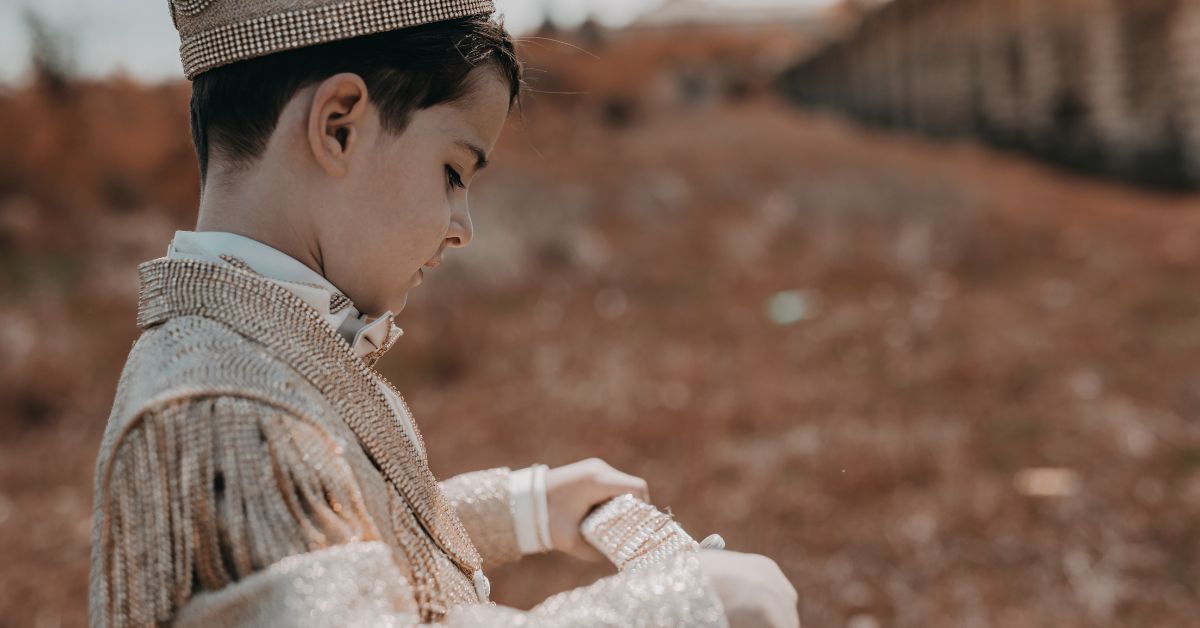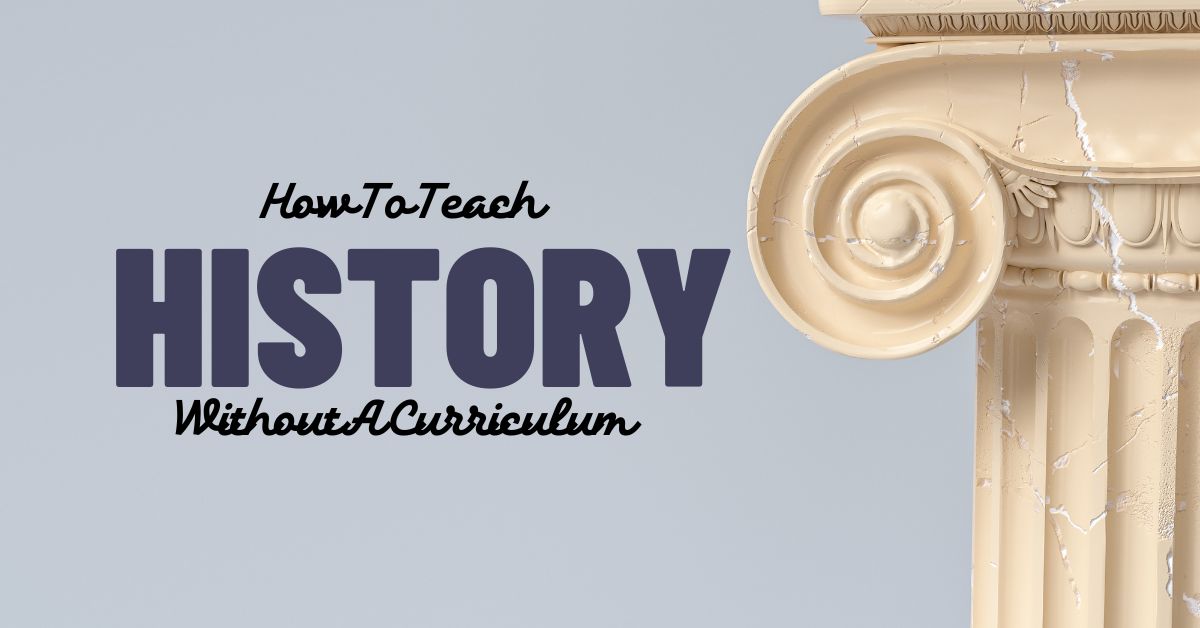Teaching history without a structured curriculum or textbooks opens the door to creative and personalized learning experiences. For homeschooling families, this flexible approach transforms history into an engaging exploration rather than a monotonous list of dates and events.
By shifting the focus to stories, hands-on activities, real-world exploration, and independent research, parents can provide a rich and immersive understanding of history.
1. Center History Lessons On Stories And Narratives
At its core, history is about people, their lives, decisions, and the events that shaped civilizations. Stories make history relatable and memorable, offering a perfect starting point for teaching without a set curriculum.
Storytelling Strategies:
- Biographies and Memoirs
Introduce your child to key historical figures through age-appropriate biographies and memoirs. For example, younger children might enjoy books on Harriet Tubman or Abe Lincoln, while teenagers could explore autobiographies such as The Diary of Anne Frank to understand the human impact of historical periods.
- Historical Fiction
Blend learning with entertainment using novels set in significant historical eras. Books like Chains by Laurie Halse Anderson, set during the American Revolution, or Esperanza Rising by Pam Muñoz Ryan, depicting life during the Great Depression, teach cultural and historical context through compelling stories.
- Myths and Folklore
Ancient cultures often captured their history through myths and folklore. Learn about Norse myths, Greek legends, or Native American oral traditions, which reveal not only historical elements but also the values and beliefs of the time.
Incorporating Family History:
- Genealogy Projects
Family roots can provide a deeply personal connection to history. Look into ancestry resources or interview older relatives to trace your family’s migration patterns or involvement in major historical events. This can lead to discussions about immigration, cultural heritage, and historical changes.
- Oral Histories
Record or write down stories from grandparents or family friends who experienced monumental periods of change, such as the civil rights movement, World War II, or even technological revolutions like the advent of the internet.
Stories connect facts to emotions, creating a vivid and lasting impression. Podcasts like Little Stories for Tiny People and audiobooks of classics such as Anne of Green Gables can also enhance history lessons through auditory storytelling.
2. Hands-On Projects That Bring History To Life
Adding hands-on activities allows children to physically interact with historical concepts. This method transforms abstract information into something concrete and easier to understand.
Ideas for Interactive Learning:
- Timelines
Build timelines using large paper rolls or digital tools. Allow your child to choose a historical theme—such as scientific inventions or major revolutions—and add key events. Supplement with images and short descriptions for visual appeal.
- Historical Art and Crafts
Reimagine the past by creating art or crafts from specific eras. For example:
-
- Paint cave art inspired by prehistoric humans
-
- Fashion Egyptian death masks from papier-mâché
-
- Sew simple garments from colonial America or Viking times
- Recreate Famous Objects
Build replicas of famous artifacts or landmarks. A simple salt-dough map of Europe during World War I, a model of the Eiffel Tower, or a replica of a medieval castle made out of cardboard can enhance historical comprehension.
- Cook Recipes From the Past
Food is an essential part of any culture. Prepare medieval stews, bake Victorian-era treats, or experiment with Indigenous American recipes. This helps connect culinary practices to geographic and cultural histories.
- Acting and Reenactment
Encourage children to stage a short play or skit about events like the signing of the Declaration of Independence or life on the Oregon Trail. Dressing the part and acting out scenes reinforces understanding in a way that passive reading cannot.
Interactive activities like these cater to tactile and kinesthetic learners, making it easier for them to grasp complex topics.

3. Leverage Local Resources Through Field Trips And Digital Exploration
Exploring history outside the house enriches the learning experience and offers opportunities to engage all the senses.
Local Adventures:
- Museums and Historic Sites
Visit museums, historic houses, or forts. Many institutions now offer child-friendly programs or interactive exhibits. A local Revolutionary War battlefield or a preserved plantation, for instance, can vividly depict life in specific eras.
- Walking Tours
Many cities and towns offer local history or architecture walking tours. These excursions often point out details about the people, politics, and industries that built the area.
- Libraries and Archives
Public libraries typically house historical documents, local newspapers, and primary sources that your child can explore for projects or research. Some even have archives of oral histories or old photographs.
For families unable to explore in person, virtual field trips broaden historical understanding. Online platforms grant access to global landmarks, such as:
- The Pyramids of Giza through Google Earth
- Virtual reenactments hosted by institutions like Colonial Williamsburg
- Online collections of famous artifacts from museums worldwide
Combining on-site visits with online deep dives lets kids explore the historical world from multiple angles.
4. Inspire Independent Research And Engage In Thematic Discussions
One of the best aspects of homeschooling is allowing your child’s curiosity to guide the learning process. Without the constraints of a fixed curriculum, you can tailor topics to their individual interests. For instance, if they’re captivated by medieval knights, investigate the culture of feudal Europe. If they’re fascinated by outer space, tie in lessons about the Cold War and the space race.
Create research challenges suited to their age and skill level. Younger children can focus on collecting basic facts about an event or person, while older students can study primary sources, analyze conflicting perspectives, and present their findings to the family. For children who enjoy writing, encourage essay-style assignments; for visual learners, suggest creating an illustrated report or infographic.
Encourage conversations about history through what-ifs and ethical dilemmas. For example, “What might have happened if the United States lost the Revolutionary War?” or, “Was it right to drop the atomic bomb during World War II?” Asking open-ended questions strengthens critical thinking and invites kids to engage deeply with complex issues.
History becomes meaningful when students understand how different events interconnect. Present historical themes like conflict, innovation, migration, or human rights as overarching narratives that weave together various times and places. Highlight cause-and-effect relationships to show how one era influences the next. For instance, discuss:
- The role of trade routes in cultural exchange, from the Silk Road to the Atlantic slave trade
- The domino effect of events leading up to major conflicts like World War I
- The interplay between technological advances, such as the printing press, and cultural revolutions like the Reformation
By focusing on larger ideas rather than isolated events, you can give children a holistic view of history as an ongoing story of humanity.
Encouragement for Your Homeschool Journey
Teaching history without textbooks empowers parents and children to explore the past in unique and creative ways. From storytelling and hands-on projects to real-world exploration and individual research, the possibilities are endless. This approach not only fosters a greater appreciation for history but also equips kids with critical thinking, problem-solving, and curiosity that extend far beyond their homeschooling years.
By following your child’s interests and making history an interactive adventure, you can create a learning experience that sticks with them for a lifetime.


